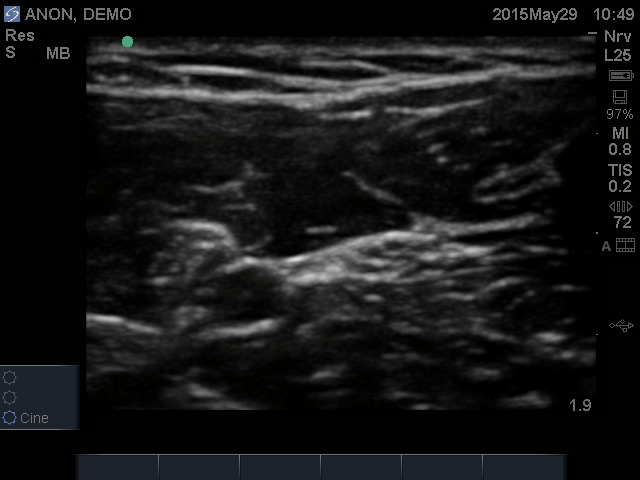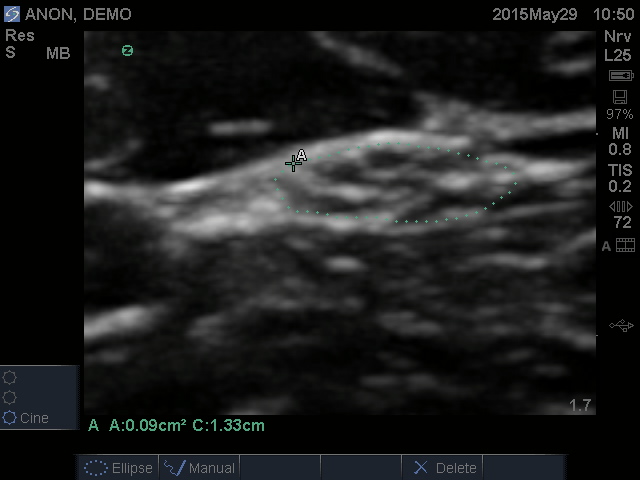Imaging other nerves with ultrasound
This area of the website is devoted to the use of ultrasound imaging of nerve and muscle in disorders other than carpal tunnel syndrome. This is a rapidly expanding field and several good textbooks are now available but I hope that these pages will provide a resource which will help to coordinate the development of this technique in neurological practice in the UK where it is relatively under-developed.
The general principles of ultrasound imaging and measurement are similar for all nerves and are covered in the CTS section. Most nerves however are rather harder to image clearly than the median nerve at the wrist, either because they are smaller, have less clearly defined boundaries, or are more deeply situated where ultrasound resolution is less.
To begin with, I propose to build up a library of normal images, organised by nerve, illustrating the range of findings seen with different machines, transducers, subjects and operators. The scope of this is outlined below and pages will be added to the site as images become available
- Median nerve - Wrist, Forearm, Elbow, Upper Arm, Axilla
- Ulnar nerve - Wrist, Forearm, Cubital Tunnel, Ulnar Groove, Upper Arm, Axilla
- Radial nerve - Superficial branch, Posterior interosseous branch, Spiral groove of humerus
- Musculocutaneous nerve - Upper arm
- Fibular (Common peroneal) nerve - Popliteal fossa, Fibular head
- Sciatic nerve - Thigh, Popliteal fossa
- Posterior tibial nerve - Popliteal fossa, Ankle
- Sural Nerve - Calf
- Superficial peroneal nerve - Ankle
There are many smaller nerves which can be imaged but the above list is already a fairly ambitious target. I have also purposely omitted brachial plexus imaging at present as this is technically quite difficult.
For the library of normal nerve images we will adopt a standard format:
Information
- Nerve name
- Anatomical site
- Date image acquired
- Scanner model
- Transducer
- Operator (initials)
Images
These should be shown without subject identification unless written permission has been obtained from the subject
- An unmarked image without post acquisition zoom
- An image showing the nerve measurement - this may be a magnified section of the first image - personally I believe that most measurements should be made on enlarged images, the only exceptions being when the nerve is so large that it fills much of the field of view anyway.
EXAMPLE
Ulnar nerve, R Forearm - at level of divergence from ulnar artery, 29.5.15. Sonosite M-turbo, L25-X 13-6MHz, JB
Transverse orientation image - ulnar artery clearly visible below left of centre, radial side of arm to left of image

Zoomed measurement image - outline drawn to include nerve fascicles

Any comments on this scheme - please post a message in the website forum
Revision date - 29th May 2015
